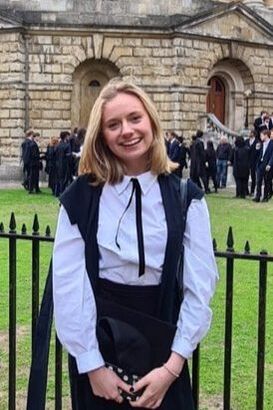|
“The ‘refugee crisis’ is a representational crisis.” (Bennett, 2018) When you hear the word ‘refugee’, what’s your first thought? Although it’s tempting to assume that you’re engaging in a game of word association, it’s likely that you’re not… Unless you have aphantasia, you’re probably visualising a mass of faceless and mute refugees occupying an inflatable dinghy, boarding the shores of a western destination. Why are you picturing this? Well, we live in a digitised world dominated by images. We communicate through images. We respond to images. We think in images. Did you hear anything as you pictured these refugees fleeing their homeland? Was anything about your mental image linguistically mediated? The answer to those questions is probably negative. It’s these images that constitute our perception of the ‘refugee experience’. Yet, what about the refugee experience do we glean through the circulation of these mass media images? This article explores how audio-visual mediums like film fare against front-page pictures in translating the refugee experience. Firstly, it's important to address what we currently understand the refugee experience to be.
Refugees & Contemporary Image Culture When a surge of refugees arrived on European shores in the summer of 2015, images of their arrival began to circulate across the global north. The public outcry in response to these images provoked political action. For instance, images depicting the Keleti train station in Budapest, transformed into a refugee camp, informed Chancellor Merkel’s decision to admit more refugees into Germany (Blachnika-Ciacek, 2020). Yet, despite the emotions elicited by these images, a western audience is left clueless as to the identities and stories of the refugees photographed. So, why don’t these images capture the refugee experience in its totality? Despite the ability of photographs to evoke both emotional and occasionally political action, images fail to enrich our understanding of a refugee’s plight. Arguably, images fail to fulfil any of the seven fundamental human needs identified by Dr. Kenneth Acha. Instead, the two needs: understanding and growth and, esteem and identity may only be fulfilled for refugees through the representation of their experience via audio-visual means. Therefore, what can audio-visual representations of refugees tell us about the refugee experience that images can’t? Audio-visual Representations of the Refugee Experience In 2021, the UNHCR estimated that 89.3 million people worldwide were forcibly displaced. So, the question remains, in a world where migration, exile, and displacement constitute the major defining experience of the century, why do refugees feel misunderstood by the general public? Since the modern refugee experience is primarily mediated through images, refugees are denied a voice. Photographs featuring a “mute and faceless physical mass” of refugees give us little to no information about the refugee and their personal story (2002, p. 247). Therefore, as Edward Said claims, despite the abundance of textual and visual representations of Palestinians, their everyday lives and struggles under occupation remain virtually unknown (1985, p. 9). Also, there is something inherently passive about looking at a photograph. Western audiences are aware that by looking, we can’t actively help or change the refugees’ lives. The only option we have is to turn away from the image. Reversely, as the individuals photographed, refugees are also forced into a passive role. Pictured in their masses, refugees don’t receive the opportunity or autonomy to be agents of their own storytelling. In this way, the refugee is always captured as a radicalised ‘other’, lacking a voice, identity, and sense of agency. So, what medium can help refugees achieve the fundamental human need of understanding? Film looks like a promising candidate. Although film can be considered a way of organising or combining images, it’s quite literally the movement of images involved in cinema that helps translate the refugee experience better than a motionless photograph. Films achieve this in two ways; replicating the flow of time and by giving refugees a voice. Firstly, the moving image necessarily creates a passage of time. This temporal flow parallels the transience and constant uprooting of a refugee’s life. Instead, the still image represents a durable and stable view of self, something many refugees don’t possess. Interestingly, Ai Weiwei films a full-body shot of various refugees in his documentary The Human Flow (2017). Although the refugees are standing in a stationary position as they are being filmed, the footage of these motionless refugees appears more profound than if they were merely photographed. The few seconds of recording time enlightens the viewer that the refugee stays in this state of homelessness, depression, and subservience. Refugees aren’t merely captured in a transitory moment of despair; through film, we glean that refugees remain in and embody a state of desolation. Furthermore, Weiwei’s use of montage where different full-body shots of refugees are compiled successively helps to reflect the shared displaced ‘affect’ of the refugee experience in conjunction with their fragmented sense of self. Secondly, films help us to better understand the refugee experience through the use of sound. Not only do tense musical scores in Hosaini’s The Swimmers (2022) or Rasmussen’s Flee (2021) help generate emotion in audiences, but these films give refugees a voice, thus granting them an identity. The use of tense music in Hosaini’s The Swimmers, whilst refugees flee their home country on a tumultuous sea, induces an anxiety in viewers that was experienced, albeit much more intensely, by refugees themselves. So, whilst images in the mass media evoke pre-existing feelings and reactions within audiences and policymakers, films create lasting feelings that in some ways, emulate the refugee experience. The Representation Crisis However, there remains a problem inherent in the act of representation. As Heather L. Johnson claims, “to construct a representation is an act of power (2011, p. 1017).” The power dynamic involved in representation creates problems for both images and film as representational mediums. For instance, the act of choosing certain political actors and refugees to participate in the film or photograph can automatically be considered an act of power since the one representing gets to control the narrative. Furthermore, films and images of refugees are often used as forms of humanitarian pornography, filmmakers being aware that the image depicting the most suffering will get the most views and thus, possesses the highest monetary value. Therefore, whether it’s through solely visual or audio-visual means, there seems to be something inherently problematic in the act of representation. This representation crisis may stem from the relationship that westerners have established with refugees. Since the ‘self’ in the west is granted a superior ontology, anyone who stands outside this ontology and economic circuit is perceived as ‘other’. In this sense, the ‘other’, being the refugee, is perceived as an object to be studied rather than an equal to build a social relationship with. The fact that refugees are being represented from a western perspective generates a gulf between the investigator and the investigated. This act of representation implicates that the investigator possesses a certain rationality and substantiveness that the one being investigated lacks. Therefore, it may not be the individual representational mediums but the act of representation itself which can’t fulfil the refugee’s need to be understood. The Solution To solve the representation crisis, it’s important that those being represented are given the agency to control and reclaim their narrative. Whether it’s through the act of directing or by being granted more autonomy within the filmmaking process, refugees might be able to become active creators of their realities as opposed to passive victims. Rather than fulfilling Kenneth Acha’s fundamental human need for understanding, this reclamation of power will instead fulfil a refugee’s need for both: esteem and identity and creativity and contribution. In addition, by granting refugees increased participation in the filmmaking process, they can represent our world back to us. You’re probably rolling your eyes and wondering why we need more depictions of Americana or Anglocentric environments, yet a refugee’s perspective of our own world can provide us invaluable insight into its flaws. The reversal of the ‘other’ and the shifting of the investigator/investigated dynamic inherent to acts of representation, will help dismantle the superior ontology granted to westerners. For example, refugee directors within classical Hollywood cinema such as Billy Wilder, Fritz Lang, and Douglas Sirk, explored exilic themes like forced displacement, ironic distance, and cultural mimicry. By engaging with the works of these refugee filmmakers, we can begin to understand the absurdities of our own world like the binary order of the nation-state with its concepts of exclusion and citizenship. Furthermore, giving refugees the opportunity to depict the new worlds and identities they inhabit avoids them having to repeatedly regurgitate their traumatic experiences of loss. This, in turn, provides refugees with a tool to channel their trauma whilst preventing the pornography of suffering that we see in mass media. Perceiving the world through a refugee’s eyes gives westerners a fresh and more realistic representation of the absurdities and flaws of our world whilst augmenting a refugee’s esteem and identity without having to revisit trauma. Final Thoughts Since refugees have already had to endure the appropriation of their bodies, perpetrated by governing bodies and/or political regimes, it’s best if this appropriation isn’t repeated through image or film. It’s clear that films depicting the refugee experience are powerful mediators of understanding. Yet, the problems identified with the act of representation have raised an interesting issue. We’ve had enough films depicting the refugee experience from a naive and inexperienced western perspective. Instead, it’s time for refugees themselves to depict their exilic experiences of acclimation and displacement, explicitly or inexplicitly, through film. Refugees will then be one step closer to achieving the human needs of understanding, esteem, identity, and creation. Perhaps exiles, emigres and refugees are better equipped to investigate a modern world defined by an ever-changing and impermanent ‘in-transit’ state. Only in this way can the ‘representation crisis’ be solved, and the tables turned. Bibliography Bennett, B. (2018). Becoming Refugees: Exodus and Contemporary Mediations of the Refugee Crisis . Blachnika-Ciacek, D. (2020). How Not to Eat Human Stories: Ruts, Complicities, and Methods in Visual Representations of Refugees. In P. Adey, The Handbook of Displacement (pp. 659-673). London: Palgrave Macmillan . Everett, W., & Wagstaff, P. (2004). Cultures of Exile: Images of Displacement . Oxford : Berghahn Books . Johnson, H. L. (2011). Click to Donate: Visual Images, Constructing Victims and Imagining the Female Refugee. Third World Quarterly, 32, 1015-1037. Kenneth, A. (2015, July 17). The 7 Fundamental Human Needs . Retrieved from Kenneth Acha Ministries : https://www.kennethmd.com/the-7-fundamental-human-needs/ Rajaram, K. P. (2002). Humanitarianism and Representation. Journal of Refugee Studies, 15(3), 247-264. Said, E. (1985). After the Last Sky. Columbia University Press.
0 Comments
Leave a Reply. |
Author
Saffron is a Master's student in Film Aesthetics MSI at Oxford University. She researched and wrote this article as part of his micro internship organised by Oxford University Career Services.
|

 RSS Feed
RSS Feed

